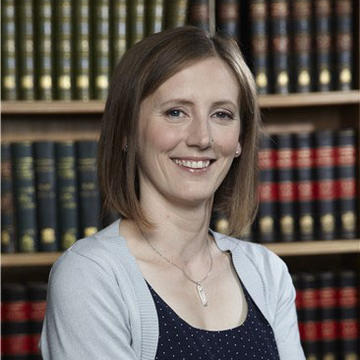Emily Flashman
Emily Flashman

Senior Research Fellow
Biography
I grew up on the south coast of England and enjoyed most subjects at school. When studying for A-levels however, I became fascinated by the research being conducted at the intersection of Biology and Chemistry, an interest which led me to a Biochemistry degree at the University of Southampton. Looking for further practical experience when I’d finished my degree, instead of moving straight into a PhD I worked as a research assistant in a transplant immunology lab at the John Radcliffe Hospital in Oxford. Although this cemented my love of being in a research lab environment, I knew that immunology was not for me and decided to move back into a more ‘biochemical’ discipline. Happily, I was offered a D.Phil. position in the Department of Cardiovascular Medicine, studying how interactions between heart muscle proteins are impacted at the biochemical level by the genetically inherited mutations that cause Hypertrophic Cardiomyopathy. This rekindled my love of protein biochemistry and I followed my DPhil studies with a postdoc position in the Department of Chemistry.
Working with Chris Schofield, I entered the fascinating world of Enzymology and found ‘my thing’ – applying the rules of chemistry to biological signalling pathways. After a couple of years research in the Schofield Group, I secured a Royal Society Dorothy Hodgkin Fellowship to study the mechanism of oxygen-sensing enzymes in humans; this allowed me to move towards research independence. My research was progressing well and was stimulating and fulfilling, but I was keeping my eyes open for new opportunities to apply my skills to an area which may yield a positive environmental impact. After reading a report describing newly identified plant enzymes which looked to play an important role in helping plants tolerate flooding, I quickly developed a project to investigate how these enzymes work and whether they might be engineered to improve plants flood tolerance. Supported by funding from the BBSRC and the ERC, I’m now managing a team of brilliant students and fabulous postdocs who are working on this and other related projects.
Current research
We are interested in how oxygen-sensing enzymes in plants and humans help these organisms to respond to reduced oxygen levels. Our main enzymes of interest, thiol dioxygenases, transfer oxygen from the atmosphere onto specific target proteins (the thiol group of the amino acid cysteine). This transfer acts as a signal for these target proteins to be degraded. If oxygen levels reduce, the thiol dioxygenases cannot work efficiently. The target proteins are not degraded but are instead stabilised in the cell. In plants, one of these stabilised proteins initiates a signal telling the plant to adapt to the low oxygen conditions by, for example, switching to anaerobic metabolism. Plants experience limiting oxygen when they are flooded and these metabolic responses can help them survive until flood waters subside. Nevertheless, if flooded for too long a plant will use up its energy reserves and die.
There is evidence that manipulating the thiol dioxygenase-mediated signalling pathway could help plants survive flooding for longer; we are therefore investigating whether manipulating the activity of the plant thiol dioxygenases might achieve this, both through inhibition and protein engineering. We undertake biochemical, structural, kinetic and inhibition assays on enzymes, revealing how any changes we make or inhibitors we add can modulate enzyme activity. But we also need to consider whether manipulating the activity of these enzymes might affect other signalling pathways in plants as well as how they might be affected by other types of stress. Fascinatingly, thiol dioxygenases are highly conserved across plants (from algae to crops) and also in the animal lineage including humans, suggesting they have fundamental roles that we are yet to discover; there is a lot more work to do to properly understand the role they play in oxygen-signalling.
Other interests
I have two primary school-aged children and a dog so outside of science my time is mostly taken up with family life, though I am also involved with a couple of community groups and am a parent governor at my kids’ school. My partner works in a research lab too and we are generally able to flexibly manage our time to coordinate everything. I relax by reading fiction, watching TV and, when the pandemic allows, eating and drinking with friends and family.




